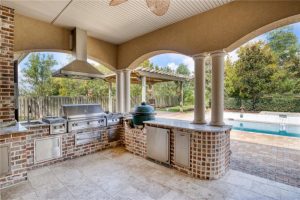Leveraging Land as Collateral
In the complex world of financing, securing a sizable loan can be a formidable challenge, even for those who are financially stable. For individuals seeking alternative methods to traditional loans, using land as collateral presents a viable option. This approach can offer more favorable terms compared to unsecured loans, such as lower interest rates and the ability to borrow larger amounts, without tapping into other personal assets like homes or savings.
Land collateral loans function similarly to home equity loans but utilize the equity in your land instead of your home. This type of loan is secured, meaning the lender holds the right to seize the land if the borrower fails to meet the repayment terms. Despite this risk, the security provided by tangible property often results in more confident lending decisions from financial institutions.
John Sport, vice president of First South Farm Credit, explains the unique benefits of using land as collateral: “One of the advantages is that it allows you to take out a loan without risking other critical assets. In some cases, the land can also serve as a substitute for a down payment, helping borrowers to preserve their liquidity.”
First South Farm Credit, a financial cooperative serving Alabama, Louisiana, and Mississippi, specializes in land loans. They offer extended payment schedules and flexible terms, making them a preferable choice for those looking to leverage land equity. To initiate a land collateral loan, the land must first be evaluated to ensure its equity value meets or exceeds the loan amount. This valuation is typically conducted by a rural land real estate appraiser who considers various factors such as location, condition, and infrastructure.
Land owners often utilize the equity in their land for purposes like acquiring additional property or funding land improvements, which could include constructions like ponds or barns. “Structuring a land equity loan can be particularly advantageous for those looking to finance significant land-related expenses without depleting other financial resources,” Sport adds.
The process for securing a land equity loan involves setting a lien on the land, which is removed once the loan is fully repaid. For those looking to build or improve homes on rural sites, the equity in the land can significantly reduce or even eliminate the need for a down payment on construction loans. Brandon Simpson, a loan officer with First South Farm Credit, notes, “The equity in your land can provide considerable leverage in securing financing for building or improvements, which is especially valuable for those in the agricultural sector.”
However, the suitability of land as collateral varies with the lender and the intended use of the loan. For instance, if the loan is for debt consolidation unrelated to farming or rural land improvements, a Farm Credit lender might not accommodate the loan request. Simpson advises potential borrowers to discuss their specific needs and circumstances with a loan officer to determine the best financing options available.
The appeal of using land as collateral lies in the opportunity to structure a mutually beneficial arrangement between the lender and borrower. It allows for substantial loans without the need for immediate cash and reduces the financial burden on the borrower. However, it’s crucial for borrowers to understand that this approach does tie up their land for the duration of the loan and carries the risk of losing the land if the loan terms are not met.
While using land as collateral can offer several advantages over unsecured loans, including lower interest rates and higher borrowing limits, it requires careful consideration and planning. Landowners must assess their financial stability, the terms of the loan, and the potential risks involved. With the right planning and advice, leveraging land as collateral can be a strategic move to meet financial goals without compromising other personal assets.




